Perfect Buttery, Flaky Pie Crust Recipe
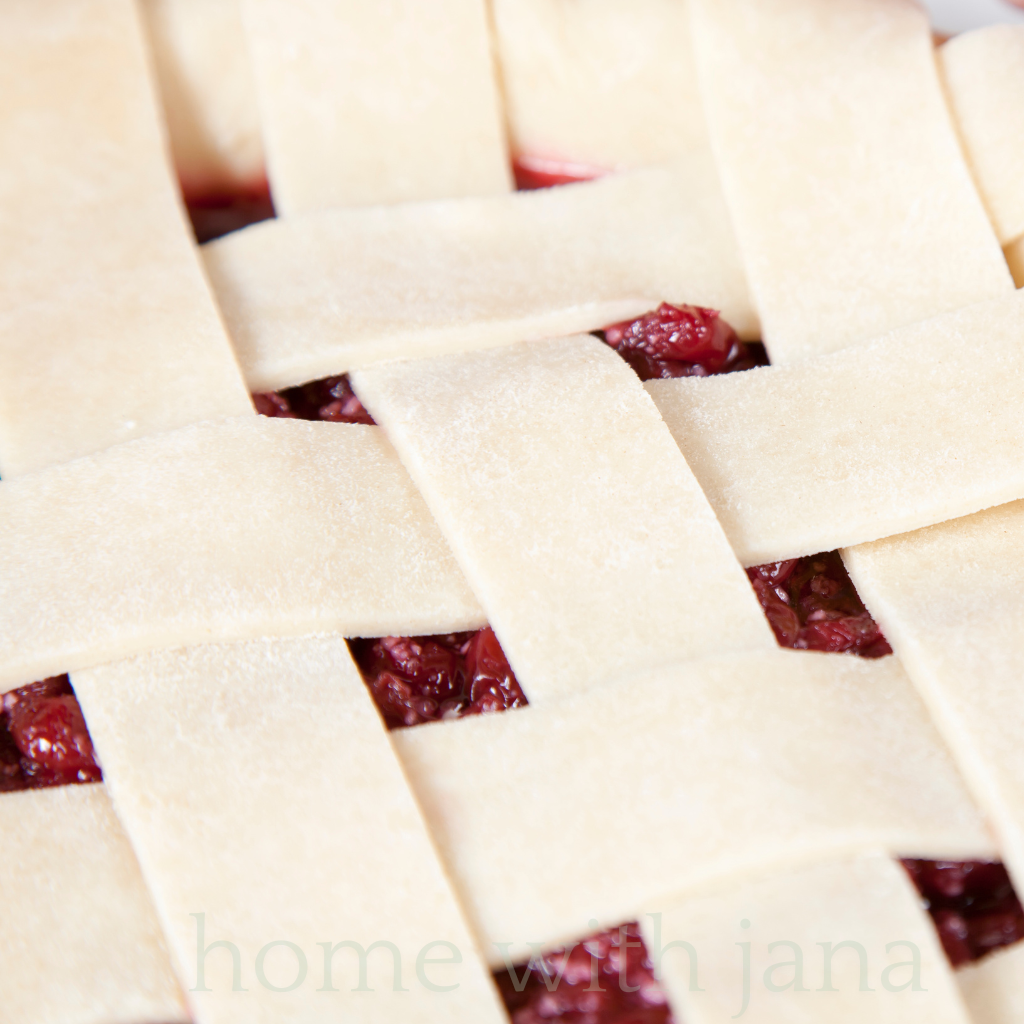
Making a buttery, flaky pie crust from scratch is easier than you think! This recipe, complete with step-by-step photos and tips, ensures success every time. Whether you’re a seasoned baker or a beginner, this guide will help you master the art of pie-making. Perfect for both sweet and savory pies, this crust is tender, flavorful, and irresistible.
Why This Recipe Works
- Cold Butter: The key to flakiness is using very cold butter. It creates steam pockets as it melts in the oven, resulting in tender layers.
- Ice Water: Keeps the dough cold while providing just enough moisture to bind the ingredients.
- Resting Time: Chilling the dough ensures the butter firms up, preventing shrinking during baking.
Tips for Success
- Use Quality Butter: Higher fat content results in a richer crust.
- Don’t Overwork the Dough: Overmixing can make the crust tough. Stop mixing as soon as it comes together.
- Chill Everything: Keep all ingredients and tools as cold as possible. Chill the flour and even the mixing bowl for best results.
Variations
- Savory Crust: Omit the sugar and add 1 teaspoon of dried herbs like rosemary or thyme.
- Whole Wheat Crust: Replace half of the all-purpose flour with whole wheat flour for a nuttier flavor.
- Cheese Crust: Mix in 1/4 cup grated Parmesan or cheddar for a cheesy twist.
FAQs
- Can I make this crust in advance?
Yes, the dough can be refrigerated for up to 3 days or frozen for up to 3 months. - How do I prevent shrinking during baking?
Chill the dough thoroughly before baking, and avoid stretching it when fitting it into the pan. - Can I use salted butter?
Yes, but reduce the added salt in the recipe by half.
How to Store and Freeze
- Refrigerate: Wrap the dough tightly in plastic wrap and store in the fridge for up to 3 days.
- Freeze: Wrap the dough in plastic wrap, then foil, and freeze for up to 3 months. Thaw in the fridge overnight before rolling out.
Frosting and Glaze Options
- For a golden crust, brush with an egg wash (1 egg beaten with 1 tablespoon of milk) before baking.
Visual Guide for a Lattice Top


Perfect Buttery Flaky Pie Crust Recipe
Master the art of making a buttery, flaky pie crust from scratch with this foolproof recipe. Includes step-by-step photos, success tips, and variations for the best homemade crust.
Ingredients
Method
- Mix the Dry IngredientsIn a large mixing bowl, whisk together the flour, salt, and sugar (if using). This evenly distributes the ingredients for a well-balanced crust.
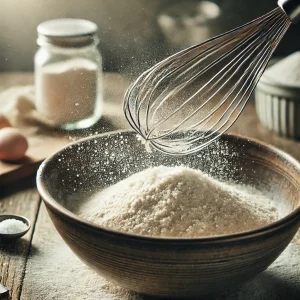
- Cut in the ButterAdd the cold, cubed butter to the flour mixture. Using a pastry cutter, food processor, or your fingers, cut the butter into the flour until the mixture resembles coarse crumbs with some pea-sized pieces of butter remaining. These butter bits create pockets of flakiness when baked.
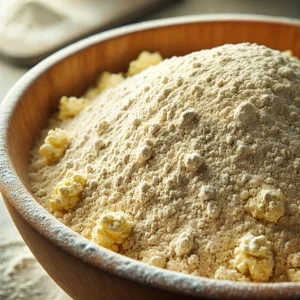
- Add Ice WaterGradually drizzle in 6 tablespoons of ice water, mixing with a fork or your hands until the dough begins to clump together. If it feels too dry, add 1 tablespoon of water at a time until the dough holds when pressed but isn't sticky.
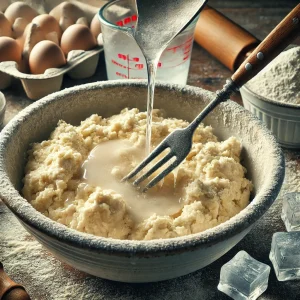
- Form the DoughTurn the dough out onto a floured surface and divide it in half. Shape each half into a flat disc, wrap tightly in plastic wrap, and refrigerate for at least 2 hours (or up to 3 days). Chilling allows the butter to firm up, ensuring a flaky crust.
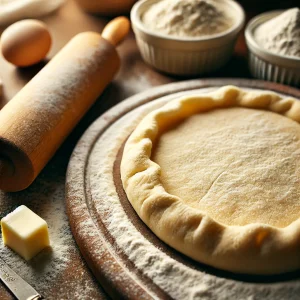
- Roll Out the DoughOn a lightly floured surface, roll one dough disc into a 12-inch circle for a 9-inch pie pan. Transfer the dough to the pie dish by gently rolling it onto your rolling pin and unrolling it over the pan. Trim any excess dough, leaving about a 1-inch overhang for crimping.
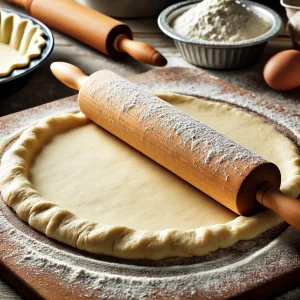
- Fill and BakeIf pre-baking, line the crust with parchment paper, fill with pie weights, and bake at 375°F (190°C) for 15-20 minutes. Remove the weights and bake for an additional 5 minutes. If making a double crust pie, add your filling and top with the second crust, crimping the edges to seal.
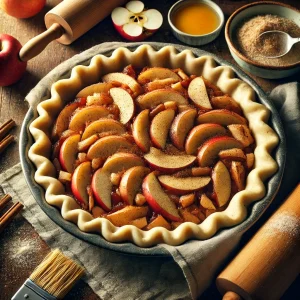
Notes
Notes and Tips
-
Keep Everything Cold:
- Ensure the butter, water, and even the flour are cold to achieve maximum flakiness.
-
Don’t Overwork the Dough:
- Handle the dough gently to avoid activating gluten, which can make the crust tough.
-
Chill the Dough:
- Chilling helps the dough rest, firms up the butter, and prevents shrinking during baking.
-
Use a Light Hand with Flour:
- Dust your surface lightly with flour when rolling out to prevent sticking, but avoid adding too much, which can toughen the crust.
-
Pre-Baking (Blind Baking):
- For custard or cream pies, pre-bake the crust using parchment paper and pie weights to maintain its shape.
-
Fluting the Edges:
- Use your fingers or the tines of a fork to crimp the edges for a decorative and functional seal.
-
Experiment with Variations:
- For a savory crust, omit sugar and add herbs like rosemary or thyme.

